
What Is a Supplemental Braking System?
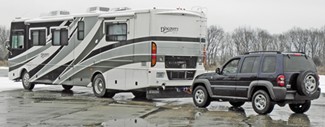
A supplemental braking system is a unique mechanism designed to brake your vehicle for you as you tow it. There are different designs, each with their own benefits, but the basic concept is the same - apply the brakes on your towed vehicle (dinghy) at the same time as you apply them in your motor home.
Reasons for Supplemental Braking
- Safety
- By using an auxiliary braking system you will achieve a safer, more controlled towing experience. The danger of having thousands of pounds at your rear will be gone.
- Less stress on both vehicles
- Your motor home, typically, is not designed to stop the extra weight of a vehicle being towed behind it. Even if the braking capacity of your motor home is greater than the weight of your dinghy, your motor home's brakes will be significantly stressed when attempting to brake that heft from behind.
- Your towed vehicle's tires, wheels and chassis may be stressed as well if a supplemental braking system is not used. With no functional brakes, the car relies solely on the force exerted from your motor home, which shoves back on the car, not directly stopping it so much as keeping it from moving forward by exerting excessive pressure on the front of the car.
- Maintenance of motor home warranty
- Motor home manufacturers place a limit on the weight that can be towed without the aid of supplemental brakes. If you exceed that recommended weight, not only do you run the risk of damaging your motor home, you are also likely to face liability issues. You may find your warranty void if you do not adhere to the manufacturer's specifications regarding the use of brakes on dinghies over a certain weight.
- Longer-lasting, better-functioning tow bar
- Panicked stops without supplemental brakes are the leading cause of tow system failure. Without a braking system in place, you are far more likely to end up in a jackknife situation. This occurs when the force of your dinghy is simply too much for your tow bar to handle. By using a supplemental braking system, you ensure that your dinghy will brake along with your RV, limiting the force exerted by it and, therefore, limiting the stress on your tow bar.
- It's the law
- Nearly every state and Canadian province requires supplemental brakes on towed vehicles over a certain weight, in the same way that they require brakes on trailers of a certain weight.
Compare the Different Systems
| Can it... | Portable Pre-Set Systems | Portable Proportional Systems | Direct Systems | Vacuum-Assist Systems |
|---|---|---|---|---|
| Be switched between different towed vehicles? | Yes | Yes | Yes | No |
| Be monitored from my motor home? | Yes | Yes | Yes | Yes |
| Activate the brakes in a breakaway situation? | Yes | Yes | Yes | Yes |
| Brake in proportion to my motor home? | No | Yes | Yes | No |
| Work with continuous power-assist brakes? | No | EvenBrake - No The Patriot - Yes | Yes - With purchase of brake pressure reducer (RM-900002) | Yes |
| Be installed quickly and easily? | Yes | Yes | No - Installation requires an advanced mechanical background | No - Installation requires an advanced mechanical background |
| Be easily and acurately adjusted? | Somewhat - Switch between 3 basic levels | Yes - Fine-tune adjustment | N/A - Adjustment is not necessary | Yes - Fine-tune adjustment |
Go to Choosing a System for more help in picking the supplemental braking system that best suits your needs.
Types of Supplemental Braking Systems
Pre-Set Systems
The most basic type of auxiliary braking system is a portable, electric brake controller that applies the towed vehicle brakes upon receiving a signal from the RV that its brakes have been applied. Roadmaster's 9700 is an example of this type of system.
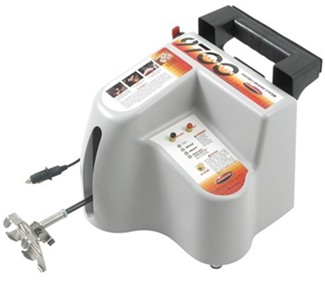
How It Works:
- System connects to RV via wiring harness and activates when RV's brake lights are engaged
- Actuator mounts in towed vehicle, in front of the driver's seat, and the extended arm depresses brake pedal when signaled
- Indicator light mounts in motor home and illuminates when towed vehicle's brakes are activated
Benefits:
- Fast, simple installation
- Portable design - switch between different towed cars quickly and easily
- Breakaway mode - set to activate only in event of breakaway
Drawbacks:
- Non-proportional system does not offer full emergency braking
- Minimal adjustment limits accuracy and control
- System can be manually set to "light", "medium" or "heavy", with no variables in between
- System works with "dead pedal" only
- Will not work with hybrids or other vehicles that have continuous power-assist brakes
- Requires that you deplete the dinghy's vacuum before towing, every time
- To deplete vacuum, pump brake pedal repeatedly so that resistance builds up
- Actuator may need repositioning - box can "crawl" up seat, affecting leverage on brake pedal
- Roadmaster's Stop Light Switch Kits can be used to ensure proper positioning
Proportional Systems
Perhaps the most popular towing braking systems, proportional devices are designed to brake your dinghy with the same intensity that you use to brake your RV. This way you get heavy-duty emergency braking, general everyday braking or slow-to-an-idle braking in one system with little manual adjustment necessary. Examples include Roadmaster's Even Brake and Blue Ox's Patriot systems.
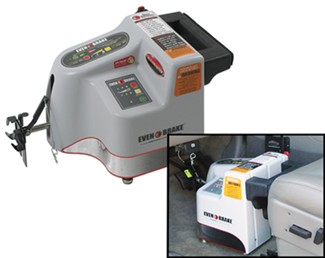
How It Works:
- Inertia-based sensor in the actuator responds to the deceleration of your tow vehicle as you're braking
- Senses how quickly your motor home is slowing
- Applies brakes in towed vehicle with an intensity that matches
- Actuator mounts in towed vehicle, in front of the driver's seat, and the extended arm depresses brake pedal when signaled
- Monitor mounts in motor home to give in-depth information about towed vehicle's braking
Benefits:
- Proportional braking essentially synchronizes tow and towed vehicles' brakes
- Manual pressure adjustment can be set to avoid overbraking
- Fast, simple installation
- Portable design - switch between different towed cars quickly and easily
Drawbacks:
- Most work with "dead pedal" only
- Will not work with hybrids or other vehicles that have continuous power-assist brakes
- Requires that you deplete the dinghy's vacuum before towing, every time
- To deplete vacuum, pump brake pedal repeatedly so that resistance builds up
- Actuator may need repositioning - box can "crawl" up seat, affecting leverage on brake pedal
- Roadmaster's Stop Light Switch Kits can be used to ensure proper positioning
Direct Systems
Direct systems have a much more involved installation process than most other systems, but they deliver superior braking as a result. Like basic proportional systems, direct systems offer everything from emergency braking to slow-to-an-idle action, yet they have a far better response time and require no manual adjustment. Direct systems tap into your tow vehicle's brakes to sense when and how you apply the pedal so that the actuator in the dinghy can replicate that same timing and pressure. Roadmaster's BrakeMaster is an example of this type of system.
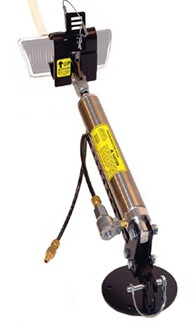
How It Works:
- Actuator connects to your tow vehicle's air or hydraulic brake lines
- Transfers air or hydraulic pressure from brake lines to air cylinder in towed vehicle
- Depresses dinghy's brake pedal at the same time and with the same intensity as you apply the brakes in the motor home
- Indicator light mounts in motor home and illuminates when towed vehicle's brakes are activated
Benefits:
- Truly synchronized braking ensures that your towed vehicle brakes in direct proportion - at the same time and with the same intensity - to your motor home
- No adjustment or pre-set intensities needed
- Actuator rarely needs to be repositioned
- Second vehicle kit can be purchased to transfer system between dinghies
Drawbacks:
- System works with "dead pedal" only
- Will only work with hybrids or other vehicles that have continuous power-assist brakes if used with a brake pressure reducer
- Requires that you deplete the dinghy's vacuum before towing, every time
- To deplete vacuum, pump brake pedal repeatedly so that resistance builds up
- Involved installation requires an advanced mechanical background
- Vehicle-specific seat adapter may be required for proper positioning of actuator
Vacuum-Assist Systems
With a vacuum-assist system - also known as an active system - your dinghy's brake pedal will be depressed with the same intensity as you would use if you were behind its wheel at the time. This is made possible by activating the power-assist function of your towed vehicle's brakes.
The power-assist feature in your vehicle multiplies the force you place on the brake pedal for effective stopping action. This was developed to make braking easier for you, the driver. Without vacuum-assist technology, you would have to strain to apply enough pressure to your vehicle's brake pedal for adequate stopping. The development of this technology allows anyone to safely drive a vehicle without having to worry about whether he or she is strong enough to effectively stop the car.
Typically, the power-assist feature does not function when your vehicle's engine is off, as is the case when the car is being towed. This is why the first supplemental braking systems that were created were designed to work with a "dead pedal." - a brake pedal without active vacuum assist.
Active braking systems tap into a separate vacuum source to achieve power-assisted braking capability in the dinghy. As a result, your dinghy's brake pedal will be depressed with a fraction of the pressure that is typically used by supplemental braking systems. Because the amount of pressure that is applied with other systems is excessive under normal circumstances, continuous use of these systems can be harmful to your vehicle. If you do not properly set the intensity, or if the system is not adequately positioned, that extreme pressure can damage your vehicle's firewall or other brake components.
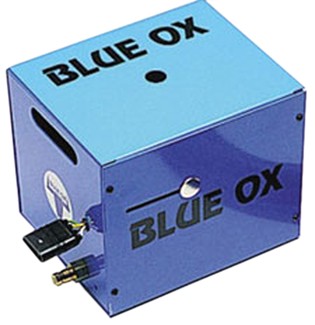
How It Works:
- Taps into vacuum source, either from RV or self-contained pump, to activate vacuum assist in the towed vehicle's brakes
- Connects to RV via wiring harness and signals actuator to depress dinghy's brakes when RV's brake lights illuminate
- Activates indicator light mounted in motor home when towed vehicle's brakes are activated
Benefits:
- Towed vehicle is given active power assist for most natural braking
- Cable pulley tugs dinghy's brake pedal with controlled pressure
- Proper leverage is always maintained
- Minimal amount of pressure is used - no chance of damage to firewall, no wheel lockup
- Sensitive throttle-valve settings offer wider range of adjustment than traditional, pre-set braking systems
- Built-in anti-theft device
- Compatible with hybrids and other vehicles that have continuous power-assist brakes
Drawbacks:
- Non-proportional system does not offer full emergency braking
- Actuator cannot be switched between towed vehicles
- Involved installation requires an advanced mechanical background
Choosing a System
If you're going to be traveling through multiple states and want to be certain to adhere to each of their laws, or if you are concerned about having a system in place for safety reasons, then any supplemental braking system should do. If, however, you have other towing-related concerns that may influence your decision, then perhaps the following guidelines can help.
If you rarely tow your car but want to be prepared for those times that you do...
Maybe you're not as concerned with having all the bells and whistles, but you do need a system in place. The most economical option is a device that activates your dinghy's brakes with a predetermined intensity. Roadmaster's 9700 controller is a basic, pre-set system that should fit your purposes.
If you intend to drive on mountains or uneven terrain...
You're going to want more control than a basic system offers. Because you will be on an incline, you will need a system that can sense the braking action of your motor home. This way the dinghy will only brake slightly if you are climbing a hill and will stop with greater intensity if you are heading down one. Either a proportional system or a direct system, therefore, is recommended, because both systems will brake your dinghy in proportion to your motor home's braking.
If you're planning a long trip...
The more time you spend behind the wheel, the more control you're going to want for your towing system. Peace of mind comes from having a dependable braking system that not only works consistently, but smoothly. Vacuum-assist systems are designed to brake your dinghy as you would if you were driving it at the time. The result is smooth, even braking that is less stressful on your car.
If you tow multiple cars at different times you might switch between towing...
Several auxiliary braking systems are portable and can be easily moved from vehicle to vehicle. Most pre-set system and proportional system can be easily switched between vehicles.
If you want a do-it-yourself system...
pre-set system and most basic proportional system are relatively simple to install. Both direct and vacuum-assist systems, however, require extensive mechanical knowledge and time. That being said, almost every auxiliary braking system, following the initial installation, can be easily removed for everyday driving and quickly re-installed for towing.
If you have a vehicle with active or continuous power-assist brakes, such as a Hummer or a hybrid...
Vehicles with this feature have brakes that continue to operate normally when the engine is off. Because the vacuum-assist function is still working when these cars are in the tow position, most systems will automatically apply too much pressure to the brake pedal, because they are designed to work with "dead" pedals.
- Blue Ox's Patriot proportional braking system has a setting that allows it to be used with hybrid vehicles that have this active braking feature.
- Roadmaster's BrakeMaster system can be used with a brake pressure reducer to correct this problem.
If you have a heavy-duty vehicle to tow...
The heavier your dinghy is, the more exact you'll want your braking to be. A direct system would be best for this because these systems are the most responsive to your tow vehicle's braking. The BrakeMaster, for example, can sense when and how you brake in your RV with greater accuracy than other proportional systems.
If you tow often and you are concerned about the possible wear and tear on your towed vehicle...
Vacuum-assist systems are designed to apply your dinghy's brakes as you would if you were behind its wheel at the time. By activating the power-assist function that your vehicle's brakes normally have, you can achieve adequate braking with a normal amount of pressure. This will eliminate any concerns about damage that can be caused by a system that applies excessive pressure to work with a "dead pedal."
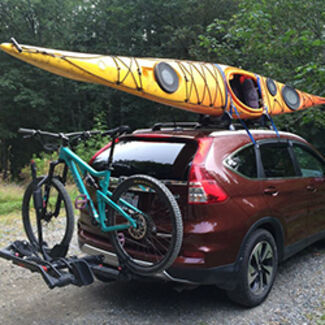
Tom
3/7/2022
Have a dump trailer with an automotive battery (located on the trailer) for raising and lowering the dump trailer - if installing a brake breakaway system can this battery be used instead of the smaller battery that comes with the kit?



Departments
Towing
- Trailer Hitch
- Fifth Wheel
- Gooseneck
- Towing a Vehicle
- Front Hitch
- RV Hitch
- ATV Hitch
- HD Truck Hitch
- Vehicle Wiring
- Brake Controller
- Ball Mounts
- Weight Distribution
Sports and Recreation
Trailer Parts
- Utility Trailer
- Boat Trailer
- Landscape Trailer
- Enclosed Trailer
- 5th/Camper Trailer
- Car Hauler
- Horse Trailer
Vehicle
Contact & Help

Popular Vehicles
- Subaru Forester
- Ford F-350 Super Duty
- Ford F-250 Super Duty
- Chevrolet Silverado 1500
- Jeep Wrangler Unlimited
- Jeep Wrangler
- Ram 3500
- Toyota Highlander
- Ram 2500
- Chevrolet Silverado 2500
- Subaru Outback Wagon
- Chevrolet Silverado
- Dodge Ram Pickup
- GMC Sierra 2500
- Ram 1500
- Ford F-250 and F-350 Super Duty
- Jeep Grand Cherokee
- Toyota Tacoma
- GMC Sierra 3500
- Toyota Tundra
- Ford Escape
- More >>



























Dawn K.
11/2/2022
How interesting that you mention what a vacuum-assist system is with your brakes. My brakes have been not working as well for the last two weeks. I will find a great place for brake parts so I can get them fixed.